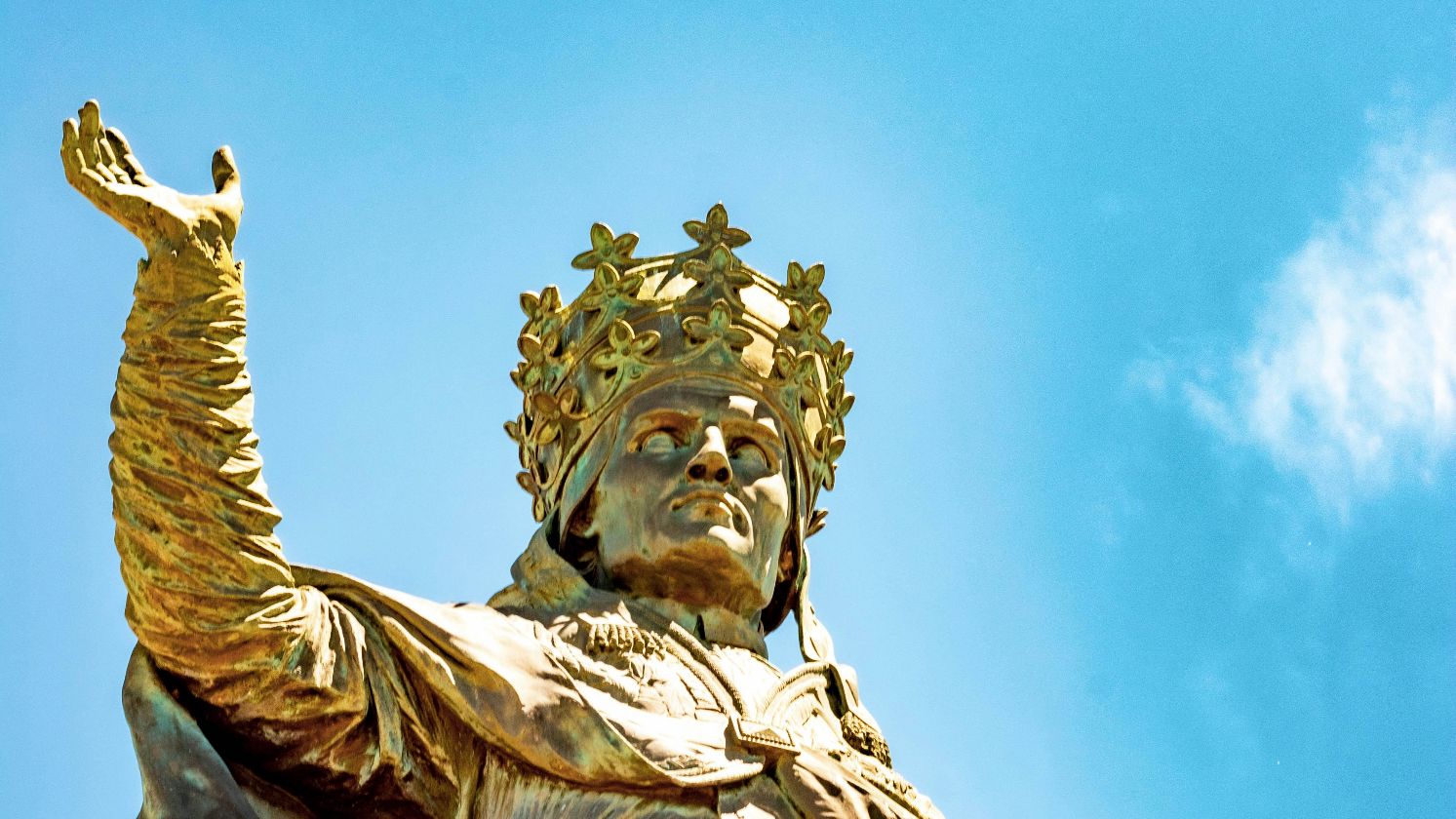Where Would Art Be Without There Trailblazers?
Throughout history, some artists have done more than create beautiful works of art; they've challenged conventions and redefined the limits of art itself. From pioneers of perspective and the use of lighting to abstract visionaries in the modern day, here are 20 of history's most innovative artists.
 Leonardo da Vinci on Wikimedia
Leonardo da Vinci on Wikimedia
1. Leonardo da Vinci
Leonardo da Vinci wasn’t just an artist; he was a multidisciplinary genius. In the art world, he pioneered sfumato, a whole new way of painting using softer outlines and smoky blending to create more realistic lights and shadows. He also introduced chiaroscuro, the dramatic contrast between light and dark, into the mainstream, influencing the likes of Caravaggio and Rembrandt.
 Leonardo da Vinci on Wikimedia
Leonardo da Vinci on Wikimedia
2. Pablo Picasso
Pablo Picasso is credited with co-inventing cubism (along with Georges Braque). This was the most revolutionary shift in art since the Renaissance. He also invented the art of collage, pushed sculpture into new territory, and constantly reimagined his own style.
3. Michelangelo
Michelangelo revolutionized Renaissance art with his “non-finito” style, leaving some of his sculptures unpolished and raw. He dissected human bodies in secret, giving his anatomical pieces an insanely realistic quality that was never seen before.
 Attributed to Daniele da Volterra on Wikimedia
Attributed to Daniele da Volterra on Wikimedia
4. Giotto
Giotto is often considered the first great innovator of the Italian Renaissance because his art showed a decisive break from the two-dimensional medieval Byzantine style. He was one of the first artists to show real emotional facial expressions and gestures and use light and shadow to create three-dimensional spaces in his paintings.
 Nicolas de Larmessin and Esme de Boulonois on Wikimedia
Nicolas de Larmessin and Esme de Boulonois on Wikimedia
5. Jan van Eyck
Jan van Eyck perfected the oil glaze technique, which entails layering translucent paints to achieve extremely realistic landscapes. The level of precision and realism he achieved in his paintings had never been seen before.
6. Claude Monet
Claude Monet was a pioneer of Impressionism. His painting “Impression, Sunrise” gave the movement its title. His rejection of academic rules and polished finishes made him a true revolutionary.
7. Henri Matisse
Henri Matisse is known for his abstract and whimsical style. He used non-naturalistic color, bold lines, and flat planes to convey emotion. He created the paper cut-out technique, in which shapes, forms, or figures are cut from paper and arranged onto a surface, playfully blurring the line between painting and sculpture.
8. Vincent van Gogh
Vincent van Gogh is probably the most famous post-impressionist artist. His bold, expressive paintings were so ahead of their time that no one appreciated them until after his death. He used a vibrant color palette, thick brushstrokes, and conveyed emotion in ways never seen before.
9. René Magritte
René Magritte had a revolutionary approach to surrealism, with paintings like “Ceci n’est pas une pipe” (“This is not a pipe”), depicting what’s clearly a pipe. He used irony and juxtaposition to create thought-provoking and witty pieces of art.
10. Georgia O'Keeffe
Georgia O'Keeffe was revolutionary for the way she transformed ordinary flowers, bones, and landscapes into magnified, abstract compositions. Her vivid use of color, unique perspectives, and use of scale had never been seen before.
11. Frida Kahlo
Frida Kahlo fused surrealism and realism to create unique, dreamlike imagery. Her paintings were deeply personal and feminist, challenging conventions.
12. Jackson Pollock
Jackson Pollock pioneered Abstract Expressionism, an art movement that emphasised emotional expression over realistic forms. He helped develop the paint drip technique, pouring and dripping paint onto horizontal canvases. He broke traditional boundaries by painting on the floor and creating insanely large-scale pieces that enveloped the viewer.
13. Georges Seurat
Georges Seurat’s pointillism technique was revolutionary for its time. He also used complementary colors and optical mixing to achieve luminosity that had never been seen before. He paved the way for Cubism, Fauvism, and influenced Neo-Impressionism.
 Unidentified photographer on Wikimedia
Unidentified photographer on Wikimedia
14. Masaccio
Masaccio was revolutionary for his innovative use of light, perspective, and realism in the early Renaissance period. He was one of the first to apply math and chiaroscuro (light and shadow) to create realistic three-dimensional spaces.
 Pierre-Auguste Vafflard on Wikimedia
Pierre-Auguste Vafflard on Wikimedia
15. Filippo Brunelleschi
Filippo Brunelleschi developed linear perspective techniques that allowed artists to realistically depict three-dimensional spaces. He also engineered the dome of Florence’s Santa Maria del Fiore, an architectural marvel at the time.
 Nicolas de Larmessin and Esme de Boulonais on Wikimedia
Nicolas de Larmessin and Esme de Boulonais on Wikimedia
16. Caravaggio
Caravaggio was revolutionary in his use of contrasting light and dark to create dramatic intensity. He was also one of the first to paint ordinary people rather than idealized figures.
17. Rembrandt van Rijn
Rembrandt van Rijn was a trailblazer for his masterful use of light, texture, and psychological depth. He mastered the chiaroscuro technique and used asymmetry to create dynamic narratives, making his paintings seem more human than ever before.
18. J.M.W. Turner
J.M.W. Turner transformed landscape painting with his innovative subtlety. He captured light, mist, and weather, creating moodiness and movement, influencing both the Romantic and later Impressionist art movements.
19. Édouard Manet
Édouard Manet broke from traditional academic conventions with his depictions of contemporary life and urban scenes in lieu of historical and mythological subjects. He also used loose brushwork to apply paint in a more spontaneous and less polished manner that was bold and experimental for the time.
20. Marcel Duchamp
Marcel Duchamp is known for radically redefining and challenging what is defined as art by presenting ordinary objects in galleries. He emphasized ideas over aesthetic beauty, making the concept behind a work more important than its visual appeal.
KEEP ON READING

Remembering Pope Stephen VI, The Guy Who Made A Cadaver…
A Godly Man With A Grudge. Jean-Paul Laurens on WikimediaYou…
By Ashley Bast Oct 31, 2025
The 20 Most Historic Battles In American History
Battles That Shook American History. Not every battle is remembered,…
By Chase Wexler May 31, 2025
From School Plays To Starting A Cult: 20 Of The…
The Books That Made Us. Many people will tell you…
By Farva Ivkovic Jan 31, 2025
20 Facts About Jane Grey, The Forgotten Queen Of England
A Quick, Messy, and Tragic Reign. Lady Jane Grey never…
By Maria Cruz Jan 31, 2025
20 Of History's Greatest Forgotten Empires
Rome Wasn't The Only One That Fell. In the annals…
By Emilie Richardson-Dupuis Jul 31, 2025
Not All Hope Is Lost. Here Are Some Career Paths…
Put That Research Brain To Good Use. You want to…
By Breanna Schnurr Oct 31, 2025














